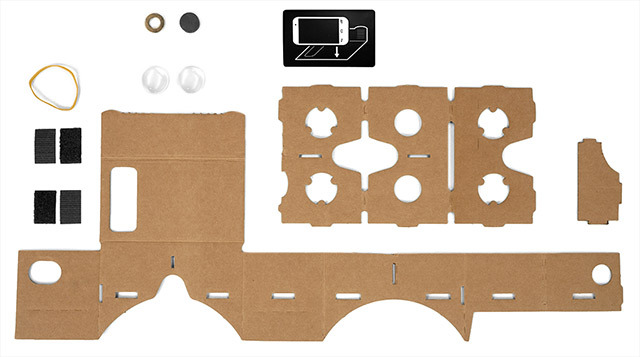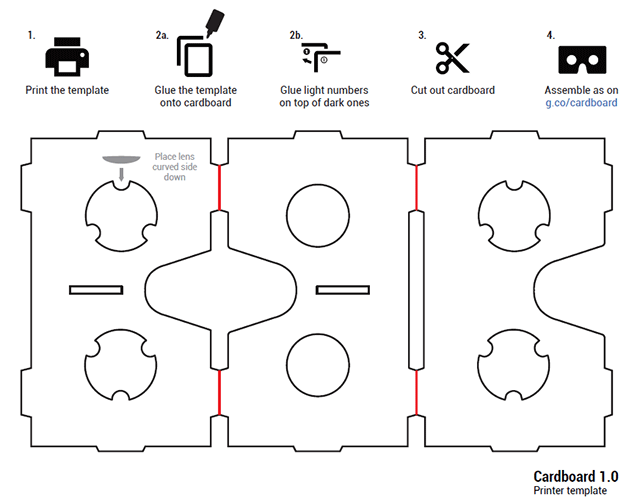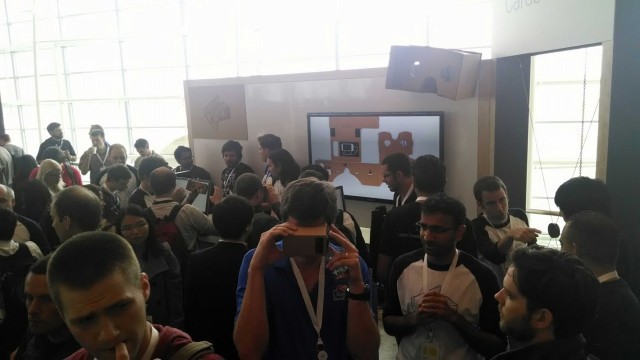Google Cardboard. Virtual reality of cardboard and Android-smartphone

Google prepared a few good news for the Google I / O conference, but the most unusual of the new products was created by a couple of employees of the Paris subdivision 20% of their time free from their main job (yes, in some places these rules still apply). This is a virtual reality simulation project using a self-made cardboard VR helmet into which an Android smartphone is inserted. The smartphone divides the picture into a stereo pair and even tracks the position of the head!
The project is called Google Cardboard .

')
Making such a helmet is easy. We need to find a suitable piece of cardboard, two lenses, a neodymium magnet with a diameter of about 19 mm and a thickness of 3 mm, a rubber ring and several stickies. It is advisable to stick to the helmet NFC-sticker for more reliable interaction with the smartphone.
The scheme of cutting the cardboard on a laser cutter and printing for cutting with scissors

Step 1/3
On a device with Android 4.2+, install the Cardboard program, put on a homemade helmet - and run the demo on the stereo screen. This is almost a real virtual reality, so to speak.
The smartphone can react to the movements of the magnet, detecting changes in the magnetic field values through the built-in magnetometer. It does not work in demos, but developers are offered to create their own applications, there you can do this: documentation for developers .
Distributing cardboard helmets at the Google I / O conference




List of compatible smartphones
Fully compatible- Google Nexus 4 and 5
- Motorola Moto X
- Samsung Galaxy S4 and S5
- Samsung Galaxy Nexus
Partially compatible
- HTC One
- Motorola Moto G
- Samsung Galaxy S3
Source: https://habr.com/ru/post/227641/
All Articles